Share this
What are the alternatives to sinus bone grafting in Singapore?
on July 5, 2016

Many patients who need dental implants to replace their missing molars do not have sufficient bone and hence need sinus bone grafting to augment the bone mass to house the implants. Although sinus bone grafting has already evolved to be a commonly done procedure with good results, many patients are understandably concern and would like to avoid it if possible. Some may have a history of sinus disease and entering the sinus for bone grafting may cause a relapse of the disease. In others, there may be ongoing sinusitis which contraindicate the procedure altogether. For these patients, what are the alternatives?
- Short Implant
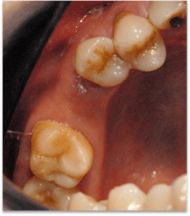
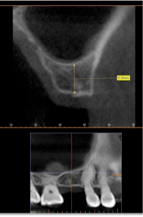
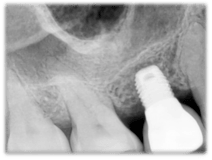
Historically, most research publications on successful implants were based on implant lengths of at least 10mm. Consequently, at least 10mm of bone is required to house the implant and that has resulted in the need for procedure such as the sinus lift to recreate the lost supporting bone structure. However, with advances in understanding of the process of how bone bonds with implants, implant designs have improved, both in terms of the macro design such as the screw threads as well as micro features such as the surface properties, implants shorter than 10mm have been found to be just as successful. Today, most of the major implant manufacturers have implants that are shorter than 10mm in their product range. They range from 5mm to 8mm. To compensate for the shorter length, implant surface is roughened to increase the bone to implant contact, the screw thread are made more aggressive to engage whatever little bone there is and the placement protocol has evolved into less drilling to preserve as much of the bone as possible. Hence, patients who have say 7mm of bone height can be treated with 7mm implants instead of having to have a sinus lift to add another 3mm of bone for a 10mm implant.
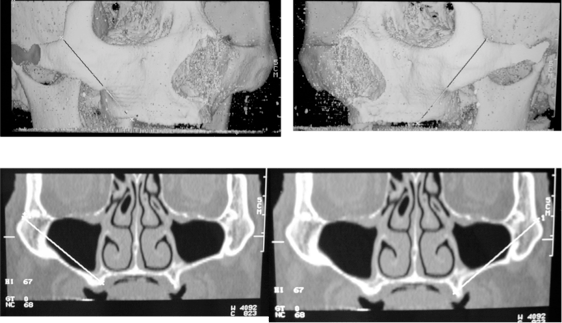
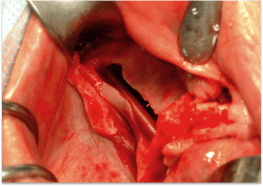
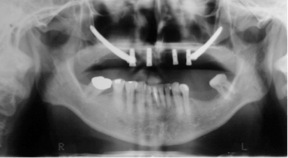
Sometimes, the bone is so thin that even a 5mm long implant cannot be inserted. If bone grafting is to be avoided, we can go the other extreme end to use super long implants instead. This is the zygomatic implant. The zygomatic bone is the cheek bone and it is made up of plenty of good quality bone. By using a very long implants, typically 48 to 52 mm long, the zygoma can be used to support a dental implant. The implant site preparation starts at the region of the first molar. The drill goes through the thin upper jaw bone at an angle of about 45 degrees, goes through the sinus to reach the upper outer corner of the sinus which is the floor of the zygoma bone. A hole of about 8mm is drilled into the zygoma bone like the usual implant site preparation except that it is angulated. The zygomatic implant is then inserted through the maxilla and sinus and into the prepared site in the zygoma bone. This is commonly done in fully edentulous cases but increasingly, it is being used in partially edentulous cases as well. This represents yet another way of bypassing the need for a sinus bone graft. Furthermore, the need to way for bone graft consolidation is also eliminated. Zygomatic implants can be loaded immediately because of the good quality of the zygoma bone.
3. Tilted implants
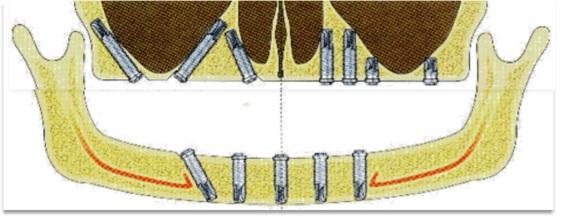
Much of implant dentistry research in the 90’s have often emphasized the concept that implant placement must be “prosthodontically driven”. What this means is the implants are merely the pillars to support the ideal prosthesis and hence it is the prosthesis that determines the position of the implants. In order to fulfill this dictum, implants have to be placed in positions in the jaw where there is insufficient bone which gave rise to the whole repertoire bone augmentation techniques such as sinus bone grafting, guided bone regeneration, nerve transpositioning etc. All these are needed because biomechanical principles then dictated that implants should be “axially loaded”, meaning that biting forces must be transmitted directly through the length of the implant and not at an angle.
However, later research has shown that “axial loading” is not a pre-requisite for success of the implant. Studies comparing implants that were placed axially against those that were tilted showed no difference in failure or complication rates. Using this concept of tilted implants, sites that are deficient in bone and require bone grafting can be avoided by placing implants in adjacent sites where bone is sufficient, but tilting the implant into the position where it is needed for the prosthesis.
The combination of short, zygomatic and tilted implants, many cases which may require bone grafting can be treated without augmentation procedures. However, while this approach is attractive, it does not solve all problems. There will still be situations where bone grafting or other adjunctive procedures are needed. In addition, patient should also understand that this is a relatively new concept compared with the traditional methods in implant dentistry and many reported cases have not been in use long enough for the long term problems to surface. This graftless approach offers patients an alternative but it by no means replaces the traditional approach.
Share this
- Jaw Surgery (93)
- Dental Implants Singapore (90)
- Orthognathic Surgery (48)
- Replacing Missing Teeth (26)
- Missing Teeth Options (23)
- Underbite (23)
- Bone Grafting (21)
- Costs (18)
- Facial Aesthetics (18)
- Aesthetics (17)
- dental implants (16)
- corrective jaw surgery (15)
- BOTOX (11)
- Dermal Fillers (11)
- Wisdom teeth (10)
- Fixed Implant Dentures (8)
- Loose Dentures Singapore (6)
- Medisave (6)
- sleep apnea (6)
- Braces (5)
- Dental Pain (5)
- Dentures in Singapore (5)
- Loose Teeth (5)
- Tooth Extraction (5)
- jaw deformities (5)
- bimax (4)
- bone graft (4)
- maxillomandibular advancement (4)
- all-on-4 (3)
- bimaxillary protrusion (3)
- chin implant (3)
- facial asymmetry (3)
- full mouth dental implants (3)
- genioplasty (3)
- immediate implant (3)
- removal of an integrated dental implant (3)
- third molars (3)
- wisdom tooth surgery (3)
- My Dentures Don't Fit (2)
- VME (2)
- bone graft healing (2)
- distraction osteogenesis (2)
- medical tourism (2)
- obstructive sleep apnea (2)
- orthodontics (2)
- plastic surgery (2)
- CT guided dental implants (1)
- Double jaw surgery (1)
- Invisalign (1)
- Periodontal Disease (1)
- Permanent Dentures Singapore (1)
- before and after photos (1)
- facial trauma (1)
- fractured dental implant (1)
- oral appliance therapy (1)
- root canal treatment (1)
- veneers (1)
- vertical maxillary excess (1)
- September 2019 (2)
- July 2019 (2)
- May 2019 (2)
- August 2018 (1)
- October 2017 (1)
- September 2017 (2)
- August 2017 (1)
- June 2017 (2)
- May 2017 (4)
- April 2017 (1)
- March 2017 (1)
- February 2017 (3)
- January 2017 (3)
- December 2016 (1)
- November 2016 (2)
- October 2016 (4)
- September 2016 (9)
- August 2016 (5)
- July 2016 (11)
- June 2016 (14)
- May 2016 (6)
- April 2016 (2)
- March 2016 (1)
- January 2016 (7)
- December 2015 (10)
- November 2015 (4)
- October 2015 (9)
- September 2015 (7)
- August 2015 (1)
- July 2015 (6)
- June 2015 (3)
- May 2015 (7)
- April 2015 (5)
- March 2015 (8)
- January 2015 (5)
- December 2014 (7)
- November 2014 (7)
- October 2014 (6)
- September 2014 (8)
- August 2014 (5)
- July 2014 (7)
- June 2014 (8)
- May 2014 (9)
- April 2014 (10)
- March 2014 (6)
- February 2014 (8)
- January 2014 (3)
Subscribe by email
Email subscription




No Comments Yet
Let us know what you think